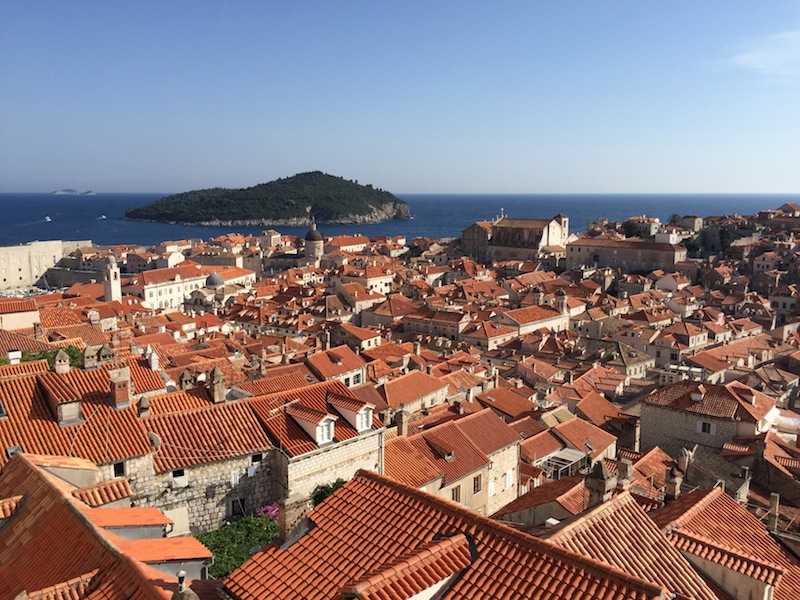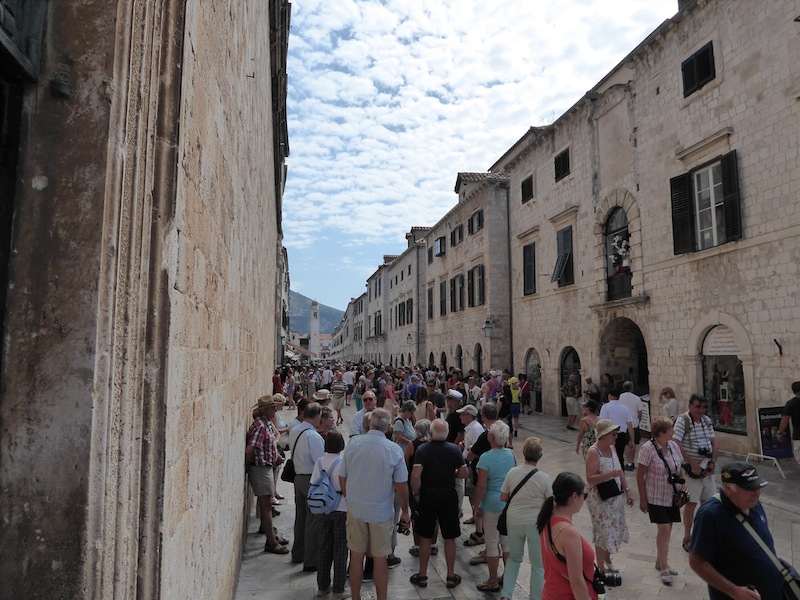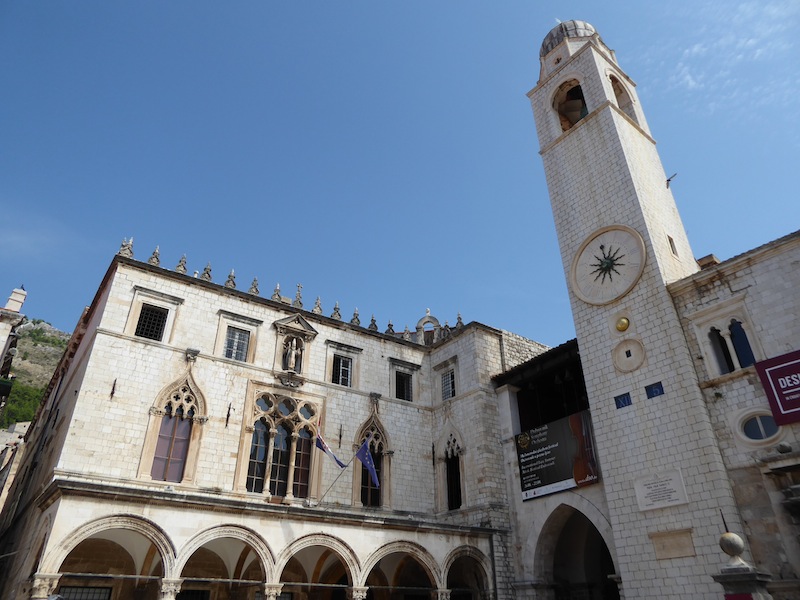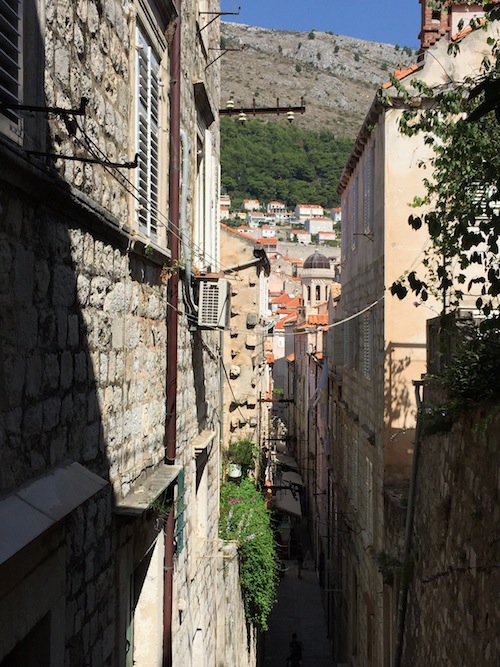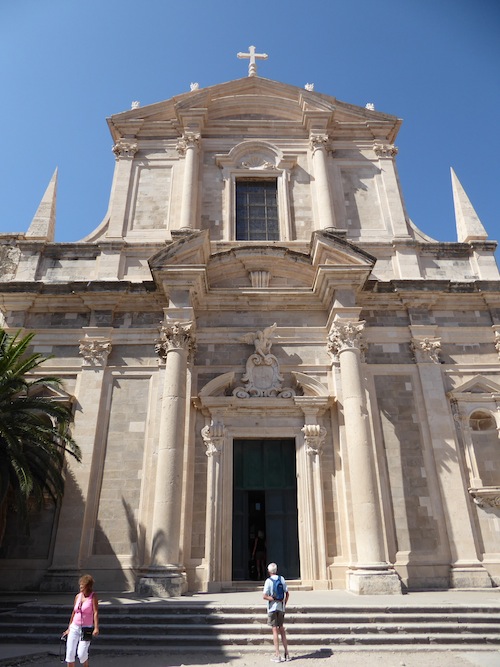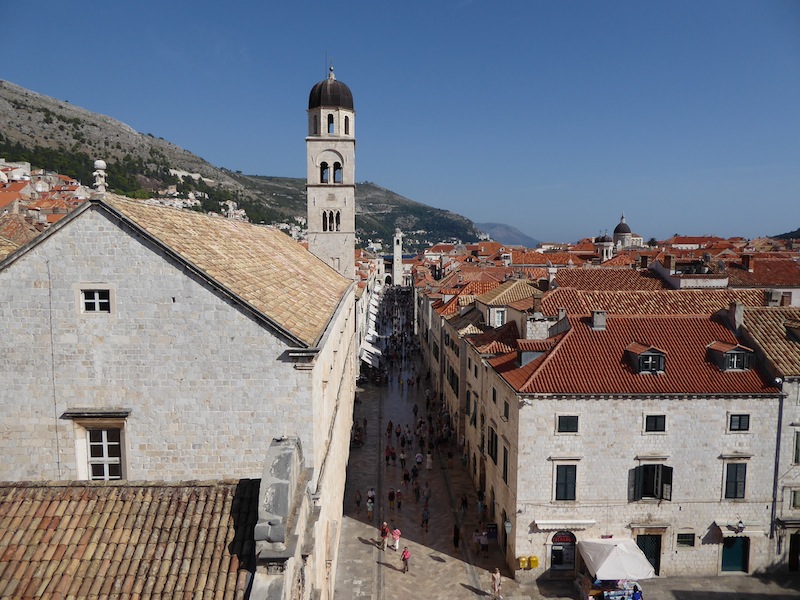The fans of cliche tell us that travel broadens the mind. But it’s also a curse. There are times when we, as tourists, threaten to overwhelm and destroy the very destinations we’ve travelled so far to see. Dubrovnik’s old town is but one example.
Croatia’s most popular destination, it’s a city under seige from swarms of tourists. Twenty five years ago it was under seige in a very different way, as Serb and Montenegrin forces surrounded and bombarded it during the terrible Balkan wars and the break-up of old Yugoslavia.
The towering, parched limestone hills to the east of the city must’ve provided an excellent vantage point for the besieging forces, with the city laid out before them and such an easy target. They would’ve seen the stunning old town from on high, its trademark red roofs, the monumental city walls, the beautiful blue Adriatic beyond. They wanted to drive out the locals and if that meant smashing Dubrovnik, a UNESCO World Heritage Site, and the suburbs that straggle along the coast to the north and south, then so be it.
Fortunately they failed and, today, the pearl of the Adriatic is restored. It looks every inch the prosperous city, its wealth based on the maritime trade of centuries past. As the capital of the Republic of Ragusa, it was a powerhouse in the region and wielded particular clout during the 15th and 16th centuries. Nowadays the city has to cope with endless streams of visitors who threaten its survival.
We arrived in September 2015 to see it, beginning at Dubrovnik’s Pile Gate. It’s the main entrance to the old town, and we were deposited there by the number 6 bus from the beachside suburb of Lapad – jammed in with half the population of Europe. Outside the gate, touts flogged tickets for kayak adventures, restaurants and goodness knows what else. It was grim, but at least we managed to avoid Dubrovnik at its worst, when the ugly, vast cruise ships are in town. A bit of careful planning courtesy of the Croatia Traveller website, which lists the ships docked on a daily basis in Dubrovnik’s modern harbour, meant we were visiting on a ‘quieter’ day. But even so, as we walked through the Pile Gate into the car-free old town itself, the place was rammed.
We emerged onto Placa, the main street that gleams in the sunshine, its marble flagstones polished to perfection by years of pedestrian traffic. The sturdy, historic buildings that line it, built after the destruction of an earthquake in 1667, provide an elegant if squat symmetry. A couple of handsome bell towers stand at both ends of the street.
But Placa is also a bit of a circus. Touts deserving of a sharp kick in the shins tried to drag us into their restaurants, a random collection of parrots squawked while tourists posed for photos, tour groups paraded off in all directions.
Opposite the Onofrio Fountain, a bulky 15th century affair that helped keep the locals in drinking water, we did find some relief from the crowds in the Franciscan monastery. Home to one of Europe’s oldest working pharmacies, the cloisters were the main attraction for me. Colourful but restored frescoes looked down on us and lush planting at the shaded heart of the building allowed for the sort of quiet contemplation that monks once enjoyed.
In the little museum to one side, the curators had retained a chilling reminder of the 1991 siege – a jagged hole in the fabric caused by a missile. On the opposite wall, we could see where it had finally come to rest.
We emerged into the scorching sunshine, fought back the crowds and peered up the side streets. Some are given over to tourism, with souvenir shops selling the usual rubbish. But other streets – mainly the steeper ones with lots of steps – are still home to locals and their washing dangled above us, drying in the light breeze.
We stopped at War Photos Limited, a gallery devoted to the subject of conflict and in particular the Balkan Wars and the siege of Dubrovnik. I’m old enough to remember this horrendous conflict, the atrocities and the racial and religious strife, which seemed to hark back to an earlier age of sickening brutality. The photos, some of them truly gruesome, brought those memories of murder and destruction flooding back and it was no wonder that the atmosphere inside was so glum and contemplative.
Yet what is so surprising is how the city today bears so few scars of those years, and I wondered how many of the tourists filling the streets outside really understood what the people of the old Yugoslavia had endured. A tour of the city walls revealed the most obvious of the scars – countless new roofs with perfect red tiles. They stood out very obviously from those that had survived the shelling.
The tour of the walls wasn’t easy thanks to the heat and the number of steps involved but it provided the very best view of Dubrovnik. Lapped on three sides by the waves of the sparkling sea, the old town sits in a bowl and looks like a cake that’s sunk in the middle. We walked past restored buildings and ruins, locals’ gardens with cats prowling amid the undergrowth and the city’s many churches and battlements. We enjoyed the views over the sea to the resort of Cavtat and the island of Lokrum.
We met up with my mum and stepdad Trev, who were staying in Cavtat, and enjoyed a lazy lunch in the shade. We joined them for a walk down atmospheric narrow alleys and into the busy Luza Square, past the cathedral. The buildings took my breath away. Chief among them were the Sponza and Duke’s Palaces, with their impressively designed arches. Looking up, we spotted patched-up bullet holes in the buildings, another reminder of the recent past.
We stumbled across tiny churches hidden from the masses, little squares that offered some shaded relief from the heat and wandered past a school where someone – pupil or teacher – was playing the piano.
At the old harbour we stopped for drinks and watched the boats heading off to Lokrum and the resorts along the coast, the tour groups still out in force. Despite the crowds, I’d fallen under the spell of Dubrovnik. The architecture was spell-binding and, where we could escape from the worst of the crowds, it echoed with atmosphere and charm.
But Graham hit the nail on the head. The city has a Disneysque feel to it. It’s in danger of becoming a parody of itself rather than a home to locals, a museum piece and playground for holidaymakers who want to buy Dubrovnik fridge magnets and ‘I heart Croatia’ t-shirts. It’s clinging on to something resembling reality, thanks to the residents who remain, but how long can they survive this tide of commercialism?
Later in the week we returned for an evening meal with the folks and endured the entreaties of numerous restaurant touts. It didn’t really matter what one we chose because most seemed to have the exact same menu.
Bathed in street lights, though, the city looked bewitching and Luza Square, still very busy, rang out with the sounds of a band. The side streets were jammed with chairs and tables and we settled in for a night of food and drink.

